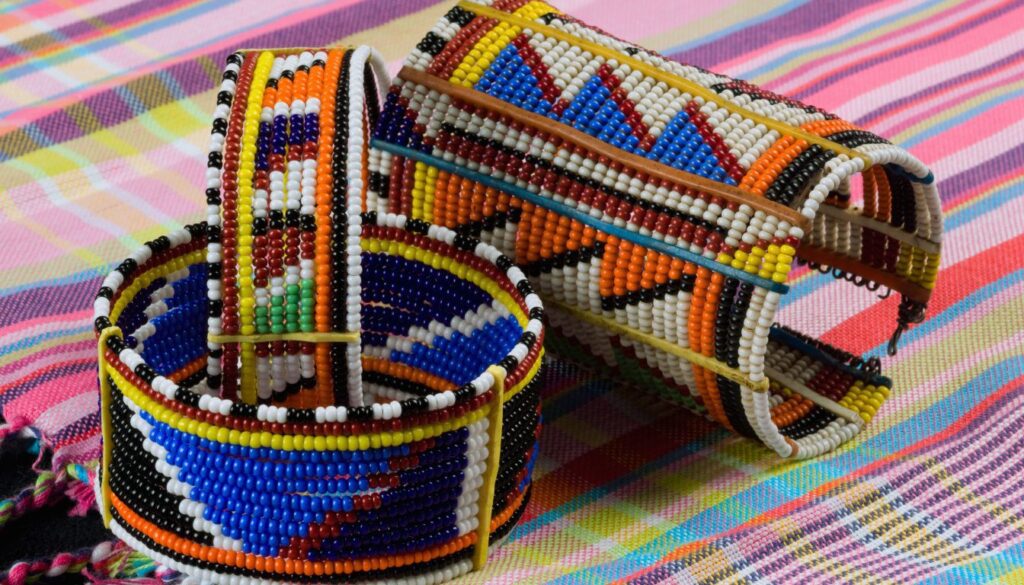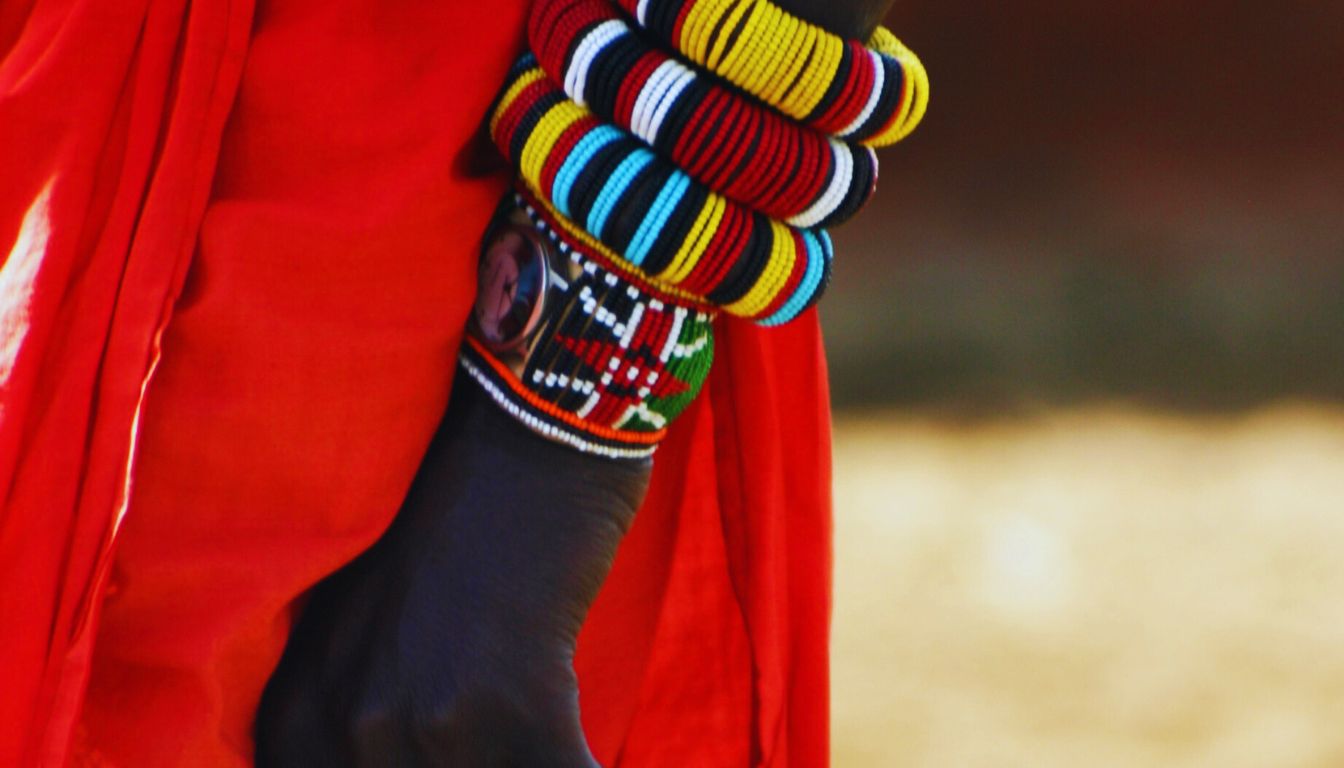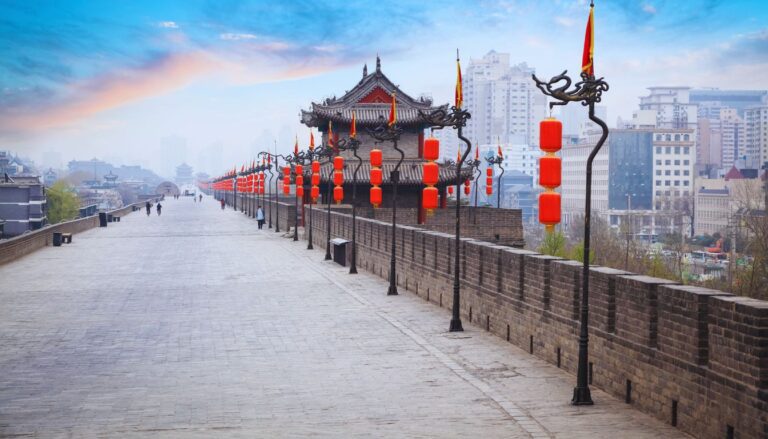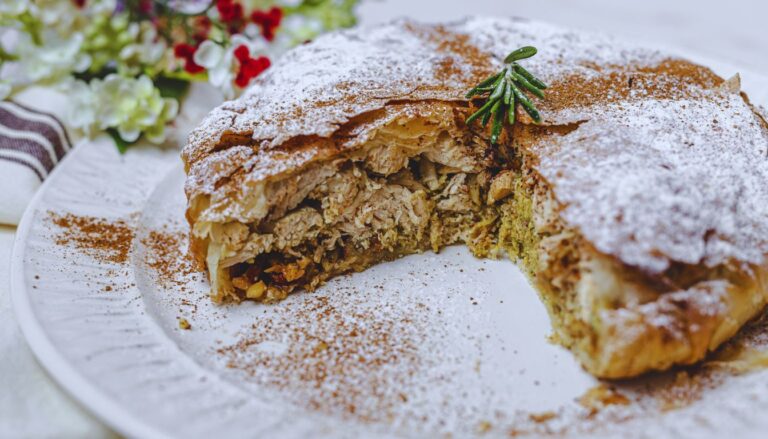In the vast savannas of East Africa, where the golden grasslands meet the horizon, the Maasai people have woven a rich tapestry of culture and tradition. Among their most striking and recognizable art forms is their intricate beadwork, a vibrant expression of identity, status, and beauty. Maasai beadwork is more than mere adornment; it is a language unto itself, speaking volumes about the wearer’s place in society, their stage of life, and even their relationship status.
This article delves into the colorful world of Maasai bead art, exploring its history, significance, and the meanings behind its dazzling array of colors and patterns. From the iconic beaded collars worn by Maasai women to the intricate headpieces that adorn warriors, we’ll uncover the stories told through these tiny, colorful beads and the role they play in preserving Maasai culture in a rapidly changing world.
Table of Contents
The Maasai People: A Brief Cultural Overview
The Maasai are a semi-nomadic ethnic group inhabiting parts of Kenya and Tanzania. Known for their distinctive customs, vibrant attire, and close relationship with their cattle, the Maasai have long captured the imagination of the world. Their traditional lifestyle, centered around pastoralism, has allowed them to thrive in the sometimes harsh conditions of the East African savanna.
Maasai society is organized into age-sets, with each generation moving through life stages together. This social structure, along with their strong cultural traditions, has helped the Maasai maintain their unique identity despite the pressures of modernization.
The History of Maasai Beadwork

Beadwork has been an integral part of Maasai culture for centuries, though the materials used have evolved over time:
- Pre-colonial era: Before the arrival of European traders, the Maasai used natural materials such as clay, wood, bone, copper, and brass to create their adornments.
- 19th century: The introduction of glass beads through trade with Europeans revolutionized Maasai beadwork. These colorful, durable beads quickly became prized possessions.
- 20th century to present: While glass beads remain popular, plastic beads have also been incorporated into Maasai beadwork due to their affordability and availability.
The techniques and designs of Maasai beadwork have been passed down through generations, primarily from mother to daughter, ensuring the continuation of this important cultural tradition.
The Significance of Beadwork in Maasai Culture
Beadwork plays a crucial role in Maasai society, serving multiple purposes:
- Identity marker: Different patterns and colors can indicate a person’s age, marital status, and social position within the community.
- Ritual importance: Specific beaded items are worn during important ceremonies and rites of passage.
- Wealth indicator: The amount and quality of beadwork a person owns can reflect their economic status.
- Artistic expression: Beadwork allows Maasai women to showcase their creativity and skill.
- Cultural preservation: The practice of beadwork helps maintain Maasai cultural identity in the face of modernization.
- Communication: Beadwork can convey messages about the wearer’s emotions, aspirations, and even political views.
Colors and Their Meanings in Maasai Beadwork
One of the most fascinating aspects of Maasai beadwork is the symbolism behind the colors used. Each hue carries specific meanings and associations:
- Red: This is the most significant color in Maasai culture. It represents bravery, strength, and unity. Red is also associated with blood, symbolizing the life force that binds the community together.
- Blue: Represents the sky and the abundant water that is vital for the Maasai’s cattle. It symbolizes energy and the divine.
- Green: Symbolizes the land, specifically the grass that feeds the Maasai’s precious cattle. It represents health and prosperity.
- Orange: Associated with hospitality and friendship. It’s often used in jewelry given as gifts.
- Yellow: Represents the sun and its life-giving warmth. It symbolizes fertility and growth.
- White: Signifies purity, health, and peace. It’s often used in jewelry worn during important ceremonies.
- Black: Represents the hardships of life and the unity of the people. It’s sometimes associated with the spirit world.
The combination of these colors in various patterns and designs allows Maasai beadwork to convey complex messages and stories.
Traditional Maasai Beaded Jewelry and Adornments
Maasai beadwork encompasses a wide variety of items, each with its own significance:
- Enkuraru (Beaded collar): Perhaps the most iconic piece of Maasai jewelry, these wide, circular necklaces are worn by women and girls. The designs can indicate marital status and social position.
- Isosin (Beaded headband): Worn by both men and women, these headbands often feature intricate geometric patterns.
- Esikiria (Earrings): Large, circular earrings made of beads and wire are popular among Maasai women.
- Engmeeta (Marriage necklace): A long, beaded necklace given to a bride by her mother, symbolizing the transition to womanhood.
- Olayioni (Warrior’s necklace): A long, beaded necklace worn by Maasai warriors, often reaching down to their waists.
- Embener (Beaded belt): These colorful belts are worn by both men and women, often featuring elaborate designs.
- Enkarewa (Ankle jewelry): Beaded anklets worn by women, sometimes accompanied by small bells.
Each of these items not only serves as beautiful adornment but also carries cultural significance and tells a story about the wearer.
The Art of Maasai Beadwork: Techniques and Patterns
Creating Maasai beadwork is a skilled art form that requires patience, precision, and creativity. The main techniques include:
- Flat beading: Beads are sewn onto a flat surface, often leather or cloth, to create patterns.
- Spiral beading: Beads are strung together in a spiral pattern to create circular pieces like the enkuraru collar.
- Loom beading: A simple loom is used to create long strips of beadwork, often used for belts and straps.
Common patterns in Maasai beadwork include:
- Geometric shapes: Triangles, diamonds, and circles are frequently used, often in repeating patterns.
- Stripes: Horizontal, vertical, or diagonal stripes in various colors are common.
- Concentric circles: Often seen in circular pieces like the enkuraru collar.
- Zigzags: These dynamic patterns are popular in belts and headbands.
The specific patterns and color combinations can vary between different Maasai communities and even individual artisans, allowing for a wide range of creative expression within the traditional framework.
Maasai Women as Artisans: Keepers of Tradition
In Maasai society, women are the primary creators of beadwork. This art form serves several important functions for Maasai women:
- Cultural preservation: By creating beadwork, women play a crucial role in maintaining and passing on Maasai traditions.
- Economic empowerment: Selling beadwork provides many Maasai women with an independent source of income.
- Social bonding: Beading is often a communal activity, allowing women to socialize and strengthen community ties.
- Artistic expression: Beadwork provides an outlet for creativity and personal expression within traditional forms.
- Education: The process of learning beadwork techniques and patterns serves as an important form of cultural education for young Maasai girls.
The role of women as the primary beadwork artisans highlights their importance as cultural custodians in Maasai society.
Maasai Beadwork in the Modern World
As the Maasai navigate the challenges of the 21st century, their beadwork tradition is evolving:
- Tourism impact: The popularity of Maasai beadwork among tourists has created new economic opportunities but also raised concerns about commercialization.
- Innovation in designs: While maintaining traditional elements, some artisans are experimenting with new color combinations and patterns to appeal to a broader market.
- Use of new materials: In addition to glass beads, artisans may incorporate other materials like plastic beads or recycled elements.
- Global recognition: Maasai beadwork has gained recognition in the global fashion industry, appearing on runways and in high-end boutiques.
- Cultural pride: For many Maasai, especially those living in urban areas, wearing traditional beadwork has become a way to express cultural pride and identity.
These changes present both opportunities and challenges for the preservation of authentic Maasai beadwork traditions.
Preserving Maasai Bead Art: Challenges and Opportunities
The preservation of Maasai beadwork faces several challenges in the modern world:
- Urbanization: As more Maasai move to cities, maintaining traditional practices becomes more difficult.
- Commercialization: The demand for “tourist art” can sometimes lead to a simplification or distortion of traditional designs.
- Loss of traditional knowledge: Younger generations may be less interested in learning traditional beadwork techniques.
- Competition from mass-produced items: Cheaper, machine-made imitations can undercut the market for authentic Maasai beadwork.
However, there are also opportunities for preserving and promoting this art form:
- Cultural centers: Establishing centers where traditional beadwork can be taught and practiced.
- Fair trade initiatives: Programs that ensure artisans receive fair compensation for their work can help sustain the tradition.
- Education programs: Incorporating beadwork into school curricula in Maasai areas can help pass on the tradition.
- Digital documentation: Using technology to record and share beadwork patterns and techniques for future generations.
- Collaborations with designers: Partnerships between Maasai artisans and global designers can create new markets for traditional skills.
The Global Influence of Maasai Beadwork
The distinctive style of Maasai beadwork has had a significant impact beyond East Africa:
- Fashion industry: Maasai-inspired designs have appeared in collections by major fashion houses.
- Jewelry design: The bold colors and geometric patterns of Maasai beadwork have influenced jewelry designers worldwide.
- Cultural exchange: Maasai beadwork serves as a point of cultural exchange, introducing people around the world to Maasai culture.
- Artisanal movements: The tradition of Maasai beadwork aligns with global interest in handmade, culturally significant crafts.
- Color trends: The vibrant color combinations used in Maasai beadwork have inspired color trends in various design fields.
This global recognition highlights the enduring appeal and relevance of Maasai beadwork in the contemporary world.
Conclusion
Maasai beadwork stands as a vibrant testament to the creativity, resilience, and cultural richness of the Maasai people. More than mere adornment, these intricate creations of glass and thread tell stories of identity, status, and tradition. They speak of a people’s connection to their land, their cattle, and each other.
As the Maasai navigate the complexities of the modern world, their beadwork serves as a powerful link to their heritage. It provides economic opportunities, especially for women, while also acting as a visual representation of Maasai identity in an increasingly globalized society.
The challenges facing the preservation of authentic Maasai beadwork are significant, from the pressures of urbanization to the allure of mass-produced alternatives. Yet, the enduring appeal of these colorful creations, both within Maasai communities and on the global stage, offers hope for the future of this art form.
As we admire the beauty of Maasai beadwork, we are reminded of the importance of cultural diversity and the power of art to connect us across boundaries. Each bead, each pattern, each vibrant hue tells a story – not just of the Maasai, but of our shared human desire for beauty, meaning, and connection.
In the intricate patterns of Maasai beadwork, we find a language that speaks beyond words, a testament to the enduring power of traditional crafts in our modern world.
Discover the must-visit cultural destinations of Maasai culture













